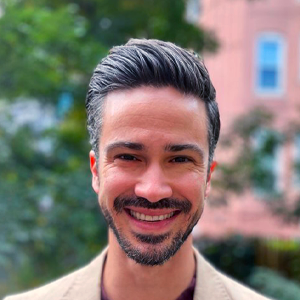Evan Schaffer is assistant professor of neuroscience at the Friedman Brain Institute at the Icahn School of Medicine at Mount Sinai. His lab uses mathematical tools to understand distributed computations in the brain, identify how these computations change with learning and identify how feedback from the body impacts cognition. Schaffer received his Ph.D. at the Center for Theoretical Neuroscience, in Larry Abbott’s lab at Columbia University. He completed his postdoctoral work in Richard Axel’s Lab at Columbia University

Evan Schaffer
Assistant professor of neuroscience
Icahn School of Medicine at Mount Sinai
Selected articles
- “Inhibitory stabilization of the cortical network underlies visual surround suppression” | Neuron
- “A complex-valued firing-rate model that approximates the dynamics of spiking networks” | PLoS Computational Biology
- “Odor perception on the two sides of the brain: Consistency despite randomness” | Neuron
- “The spatial and temporal structure of neural activity across the fly brain” | Nature Communications
- “Behavioral fingerprinting of the naked mole-rat uncovers signatures of eusociality and social touch” | bioRxiv
Explore more from The Transmitter
Psychedelics research in rodents has a behavior problem
Simple behavioral assays—originally validated as drug-screening tools—fall short in studies that aim to unpack the psychedelic mechanism of action, so some behavioral neuroscientists are developing more nuanced tasks.

Psychedelics research in rodents has a behavior problem
Simple behavioral assays—originally validated as drug-screening tools—fall short in studies that aim to unpack the psychedelic mechanism of action, so some behavioral neuroscientists are developing more nuanced tasks.
New organoid atlas unveils four neurodevelopmental signatures
The comprehensive resource details data on microcephaly, polymicrogyria, epilepsy and intellectual disability from 352 people.

New organoid atlas unveils four neurodevelopmental signatures
The comprehensive resource details data on microcephaly, polymicrogyria, epilepsy and intellectual disability from 352 people.
Can neuroscientists decode memories solely from a map of synaptic connections?
Five experts discuss the progress, possibilities and hurdles of decoding a “nontrivial” memory from an organism just by analyzing its brain connectivity patterns.
Can neuroscientists decode memories solely from a map of synaptic connections?
Five experts discuss the progress, possibilities and hurdles of decoding a “nontrivial” memory from an organism just by analyzing its brain connectivity patterns.